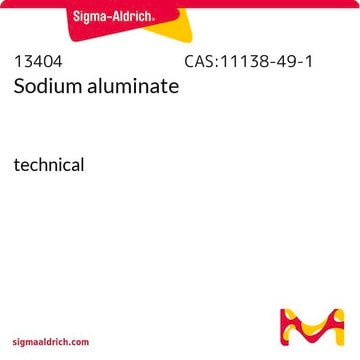All Photos(1)
About This Item
Linear Formula:
CH3(CH2)32CH3
CAS Number:
Molecular Weight:
478.92
Beilstein:
1788466
EC Number:
MDL number:
UNSPSC Code:
12352100
PubChem Substance ID:
Recommended Products
Assay
98%
form
flakes
bp
285 °C/2 mmHg (lit.)
mp
72-75 °C (lit.)
SMILES string
CCCCCCCCCCCCCCCCCCCCCCCCCCCCCCCCCC
InChI
1S/C34H70/c1-3-5-7-9-11-13-15-17-19-21-23-25-27-29-31-33-34-32-30-28-26-24-22-20-18-16-14-12-10-8-6-4-2/h3-34H2,1-2H3
InChI key
GWVDBZWVFGFBCN-UHFFFAOYSA-N
Looking for similar products? Visit Product Comparison Guide
General description
Tetratriacontane is one of the components of the oil extracts of the red alga Jania ruben.
Application
Tetratriacontane was used as an internal standard in the analysis of a new estrogenic drug, 17 α-ethynylestriol 3-cyclopentyl ether, by GLC method.
Storage Class Code
13 - Non Combustible Solids
WGK
WGK 3
Flash Point(F)
Not applicable
Flash Point(C)
Not applicable
Personal Protective Equipment
dust mask type N95 (US), Eyeshields, Gloves
Choose from one of the most recent versions:
Already Own This Product?
Find documentation for the products that you have recently purchased in the Document Library.
R H Bishara et al.
Journal of pharmaceutical sciences, 64(7), 1210-1213 (1975-07-01)
A rapid, sensitive, and accurate GLC method of analysis of a new estrogenic drug, 17 alpha-ethynylestriol 3-cyclopentyl ether, was developed. The drug and the internal standard, tetratriacontane, are dissolved in chloroform, and an aliquot is heated with N-trimethylsilylimidazole at 80
N Ulku Karabay-Yavasoglu et al.
Phytotherapy research : PTR, 21(2), 153-156 (2006-11-28)
The methanol, dichloromethane, hexane, chloroform and volatile oil extracts of the red alga Jania rubens were tested in vitro for their antimicrobial activity (five Gram-positive, four Gram-negative bacteria and Candida albicans ATCC 10239). GC-MS analysis of the volatile components of
Johannes Niebler et al.
Phytochemistry, 109, 66-75 (2014-12-04)
Frankincense has been known, traded and used throughout the ages for its exceptional aroma properties, and is still commonly used in both secular and religious settings to convey a pleasant odor. Surprisingly, the odoriferous principle(s) underlying its unique odor profile
Our team of scientists has experience in all areas of research including Life Science, Material Science, Chemical Synthesis, Chromatography, Analytical and many others.
Contact Technical Service





